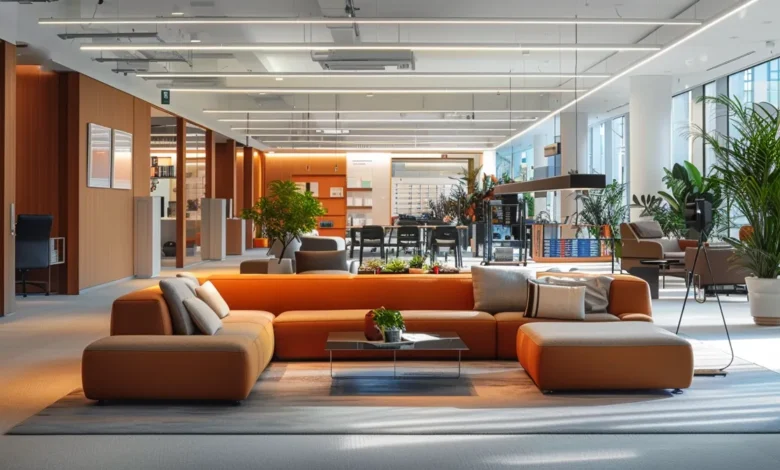From Concept to Reality: Steps for Planning Your New Office Space

Embarking on the journey of creating a new office space is an exciting venture that can have a profound impact on your business’s future. To navigate this process effectively, it is essential to approach each stage with clear goals, strategic planning, and a solid understanding of your organization’s needs. Whether starting from scratch or renovating an existing space, the steps you take from conceptualization to completion will influence your team’s productivity, company culture, and brand image. Below, we outline key considerations to help you plan your new office space with confidence and success.
Understanding Your Office Space Needs and Setting Clear Objectives
Planning a new office begins with a clear understanding of your business’s operational needs, workforce size, and future growth. This assessment shapes the required space, layout, and amenities. From there, define your objectives—whether it’s encouraging collaboration or balancing open and private zones—to ensure the design aligns with company culture and workflow. Using tools like newage products can streamline this process with modular solutions that support both productivity and comfort.
Flexibility is essential in today’s evolving work landscape. Designing adaptable spaces prepares your office for growth and unexpected changes. Engaging various stakeholders during planning fosters inclusivity and function across teams. For professional help in creating responsive, tailored workspaces, consider experts like https://www.air-zona.net/ who specialize in strategic office solutions.
Designing an Office Layout that Aligns with Your Brand and Work Style
Designing an office layout requires blending functionality with aesthetics to reflect the company’s brand. Every element—colors, materials, and design choices—should convey identity and values to both employees and clients. The layout must also align with how teams work. Creative companies may need open, collaborative zones, while firms handling confidential data require private spaces.
Ergonomics plays a crucial role, with thoughtful furniture and wellness areas improving health, morale, and talent retention. Working with architects and designers ensures your vision is translated effectively and legally. Integrating advanced technology and flexible features helps create a modern, future-ready office that supports evolving business needs.
Creating a Realistic Budget and Financing Your Office Space
Financial planning is critical when launching an office space project. Start with a detailed budget that includes lease or purchase, construction, design, technology, furniture, and contingencies. Secure financing through loans, investors, or reserves by presenting a solid business case and financial projections.
Spend strategically, prioritizing essential features without compromising quality. Cut costs by leasing equipment or designing multi-functional areas. Investing in energy-efficient systems and sustainable materials can reduce long-term operational expenses and boost your brand’s eco-image. Maintain consistent communication with financial advisors to track spending. Early detection of budget issues allows for corrective action, helping to avoid major financial setbacks.
Navigating the Legalities: Zoning, Permits, and Compliance Issues

Administrative planning is just as crucial as design and budgeting when setting up an office. Understanding local zoning laws is essential, as violations can lead to legal issues or forced relocation. Securing the necessary permits for construction or renovations is another critical step, helping avoid costly delays or penalties. Engaging legal experts or consultants familiar with local codes can ease the process.
Beyond permits, your office must comply with building codes, health and safety regulations, and accessibility standards, which differ by region and industry. Overlooking these requirements can endanger employee safety and expose your business to legal and financial risks. Prioritizing compliance not only protects your company but also reinforces your commitment to providing a secure, inclusive, and legally sound work environment that supports employee wellbeing and operational integrity.
Selecting the Right Location: Factors to Consider for Accessibility and Visibility
The location of your office significantly affects its success, influencing accessibility, branding, and overall appeal. Key factors include proximity to public transportation, parking availability, and visibility from main roads. A prime location enhances brand image, especially if it’s a prestigious address or near industry peers. It signals professionalism to clients and reinforces your market position.
Surrounding amenities like cafes, restaurants, and parks also boost employee satisfaction and support work-life balance. These spaces can double as informal meeting areas. Importantly, evaluate the area’s growth potential—establishing in an expanding district can bring long-term advantages, while a declining neighborhood may harm operations and morale.
Altogether, the meticulous planning and informed decision-making outlined in this article serve as indispensable tools in the creation of your new office space. With a blend of clear objectives, thoughtful design, prudent budgeting, legal awareness, and strategic location selection, you can build an office environment that not only meets but exceeds your company’s needs and aspirations.




